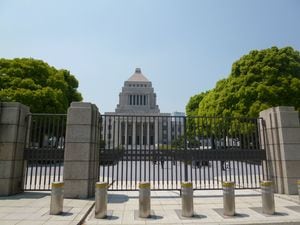One thing that will certainly happen with global warming is the rise of the sea level. According to the IPCC, a 2℃ increase (RCP4.5) will raise the median sea level by about 48 cm by 2100. This is about 6 mm per year, which is not a big problem in developed countries. However, flood damage will likely increase in developing countries. As a countermeasure, building embankments is much cheaper than decarbonizing.
In other words, based on recent data, many scientists agree that the harmful effects of global warming will be an increase in the average temperature by 2℃ and the sea level rising by about 50 cm in this century. This is not a major problem for the survival of mankind.
Will spending over ¥100 trillion annually lower the temperature by 0.01℃?
However, it is best that the temperature does not rise. The question is the cost effectiveness of stopping the temperature increase. For this, the Paris Agreement in 2015 set the goal of suppressing the temperature increase within 2℃ by 2100 since the Industrial Revolution.
Since it has risen by about 1℃ so far, the temperature increase must be contained within 1℃ during this century. But how much will it cost? In 2016, the Research Institute of Innovative Technology for the Earth (RITE) estimated the cost of achieving the Paris Agreement's goal for an 80 percent reduction of CO2 emissions to be ¥43 trillion to ¥72 trillion annually.
Since it deems zero emissions as "technically impossible," RITE has not calculated the cost of it. However, it would cost more than ¥100 trillion every year, which is about the same as Japan's national budget.
And what effects would it have? According to calculations by IPCC author Daishi Sugiyama, if Japan reduces CO2 emissions to zero, it would contribute to an average global temperature reduction of less than 0.01℃ 80 years later. Since Japan's CO2 emissions account for only 3 percent of the world's total, even if Japan attained zero emissions, it would not stop global warming.
The financial cost would be enormous. The levy on renewable energy alone would be a national burden of ¥44 trillion until 2030. It would be necessary to abolish thermal power plants, replace all gasoline-powered vehicles with electric vehicles, and ban the production of steel and cement.
With such tightening of regulations, companies need not sacrifice profits to comply. Steel and cement production can be moved to other Asian countries, making domestic automobile production impossible. With this hollowing out of the manufacturing industry and the loss of jobs, the annual cost would be much higher than ¥100 trillion per year. If zero emissions are actually implemented in 2050, the Japanese economy would most certainly collapse.















